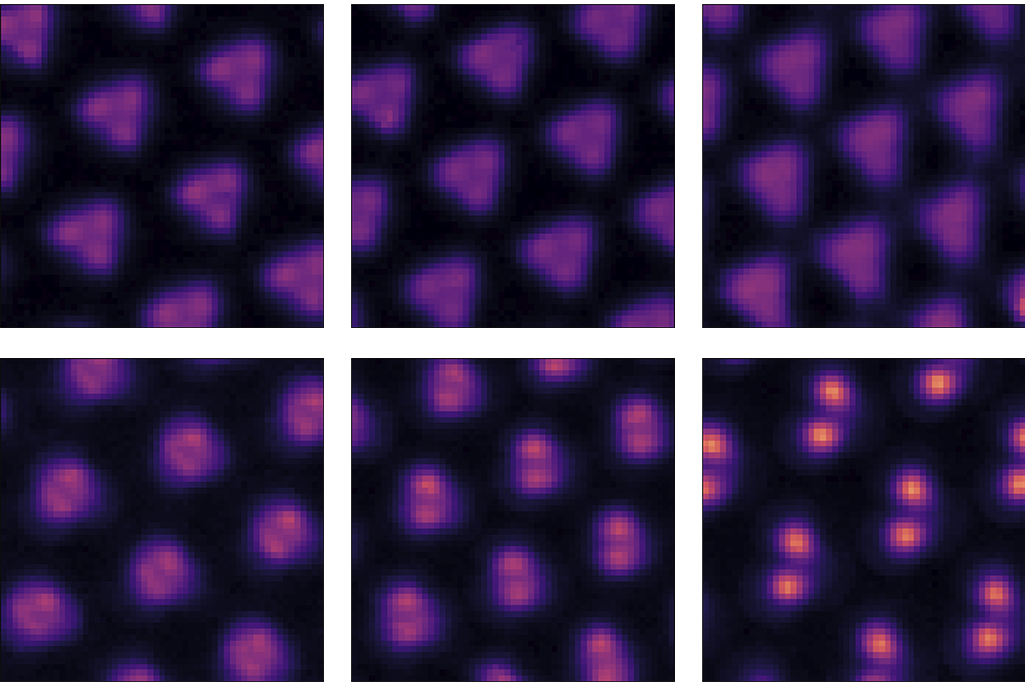Capturing Quantum Ice: A New Perspective on the Elusive Wigner Molecular Crystal

Insider Brief:
- Scientists at Berkeley Lab and UC Berkeley successfully captured direct images of a Wigner molecular crystal, a newly identified quantum phase, using a refined imaging technique that minimizes disturbance to electron structures.
- This discovery substantiates long-standing theories on Wigner crystals, originally proposed by physicist Eugene Wigner in the 1930s, which suggest that electrons can form stable, orderly arrangements under specific conditions of low temperature and density.
- Unlike the original Wigner crystals, which exhibit a honeycomb-like pattern, Wigner molecular crystals feature electron “molecules” formed by pairs of electrons in an organized lattice, providing insights into electron interactions that could benefit quantum technology.
- Future research will explore the manipulation of electron density in these crystals, with potential applications in quantum simulations and other areas where electron behavior is relevant.
- Image: Scanning tunneling microscope images of electrons evolving into a single Wigner molecule. Credit: Berkeley Lab
For the first time, scientists have captured direct images of a new quantum phase of matter known as the Wigner molecular crystal—a structure that could contribute to new approaches to quantum technology. Led by researchers at Berkeley Lab and UC Berkeley, the study used an innovative imaging technique to capture this delicate electron formation. This achievement not only substantiates decades-old theories on electron solids but also opens the door to studying how these ordered electron structures interact under controlled conditions.
The Journey to Understand Wigner Crystals
Named after physicist Eugene Wigner, the Wigner crystal concept dates back to the 1930s, as detailed in a recent Nature retrospective on the phenomenon. Unlike typical electrons that rapidly traverse materials, Wigner theorized that electrons could be slowed to a near-standstill under certain low-density, low-temperature conditions. This would effectively create a structured “electron ice” made of an orderly of electrons held in a honeycomb pattern. For nearly 90 years, researchers could only speculate on its existence, until a 2021 development led by Feng Wang and Michael Crommie provided visual proof of Wigner crystals.
The latest study takes this discovery a step further, capturing images of a more complex quantum phase: the Wigner molecular crystal. According to the study, this new phase is defined by organized patterns of artificial molecules formed from electron pairs. “We are the first to directly observe this new quantum phase, which was quite unexpected,” says Wang, a Berkeley Lab faculty scientist and UC Berkeley physics professor. The findings, reported in Science, speaks to the crystal’s potential for advancing our understanding of electron interactions and their applications in quantum technology.
Scanning Technique Enables Direct Observation
Despite years of research, direct imaging of Wigner molecular crystals has remained elusive, largely because conventional scanning tunneling microscopes (STMs) risk disrupting the crystal’s delicate electron structure. For this study, Berkeley Lab scientists used a new STM technique, fine-tuning the electric field to minimize interference and successfully capture the intricate molecular arrangement.
According to the study, the team achieved these images by creating a “twisted tungsten disulfide (tWS₂) moiré superlattice”—a nanomaterial built from bilayered tungsten disulfide and arranged at a 58-degree angle. This structure, combined with hexagonal boron nitride and a graphite back gate, enabled the researchers to confine electrons within 10-nanometer-wide cells. Each cell contained two to three electrons, forming ordered arrays of moiré electron molecules that culminated in a Wigner molecular crystal.
Wigner Molecular Crystals Versus the Original Wigner Crystal
According to the study, Wigner molecular crystals differ from the original Wigner crystals, which exhibit a uniform honeycomb-like pattern. In this new quantum phase, the electron “molecules” are formed by two or more electrons confined within individual cells, creating an ordered lattice of electron pairs. This configuration arises from the interplay between quantum mechanics and electron-electron interactions, which collectively drive the electrons into these stable states. The study explains that the moiré superlattice’s low temperature and unique energy potential are essential for this molecular arrangement, adding a new dimension to Wigner’s original theory.
These crystalline structures are not just visually striking but also scientifically significant. The ordered arrangement of electrons could reveal new properties related to electron transport and spin, which are highly relevant to the development of quantum technologies. Researchers hope that understanding these characteristics could lead to advances in quantum simulations, where electron interactions are central.
The Future of Wigner Crystals in Quantum Research
Beyond its immediate impact, the study hints at future possibilities for Wigner crystals in quantum research. According to Wang, refining the STM technique further may help capture additional details about this quantum phase, which could help us understand how to leverage electron interactions in new ways. Looking ahead, the research team also intends to explore how manipulating the electron density in these crystals might impact their properties. These next steps, backed by support from the Department of Energy’s Office of Science and the National Science Foundation, could uncover even more about this intriguing state of matter as well as indirectly advance quantum technology.
